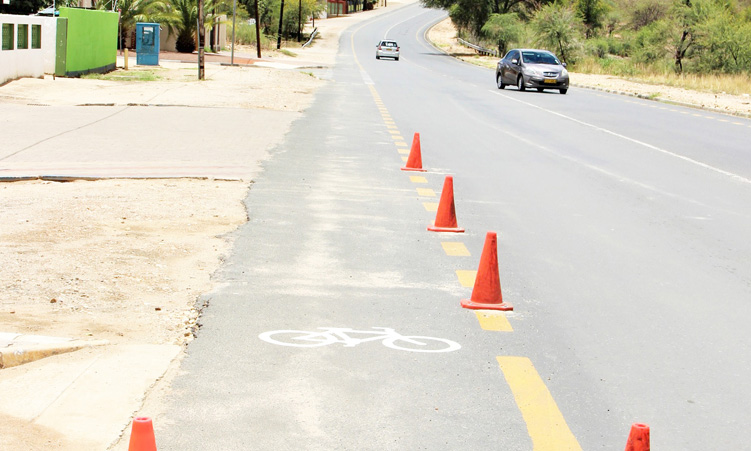The implementation of bicycle lanes in Windhoek has sparked debate, with contrasting opinions emerging from city officials and prominent figures in the cycling community.
The project, which aims to enhance accessibility, reduce congestion and promote sustainable transportation, has encountered challenges which have divided opinion on its effectiveness.
Horst Heimstadt of the Namibia Road Safety Forum expresses a less optimistic view of bicycle lanes. He says the attempt to introduce bicycle lanes in Windhoek has been a “total failure”.
“It is common that bicycle lanes are designed by people who do not understand cycling and have no urge to make use of the cycling lanes.
“As a result, the lanes are not utilised, and the designers reference this fact to the argument that Namibians don’t cycle, however, the fault is in the design,” he says.
Heimstadt says 70% of Windhoek’s residents do not own a car, making the need for bicycle lanes crucial in low-income areas.
He says there are no cycling lanes along Peter Nanyemba Road (previously Monte Cristo Road), despite a good non-motorised transport strategy.
Heimstadt highlights several issues with the current bicycle lane design, including the danger of cyclists entering streets from sidewalks, the narrowness of the lanes, and the exclusion of road bikes due to unpaved sidewalks.
“With more than 90% of the people living in the low-income north-western areas of Windhoek, the construction of a road that provides for cars only is questionable. The provision of a paved sidewalk is outdated and needs drastic change in thinking,” he says.
Heimstadt calls for the widening of bicycle lanes and proper barriers between cars and bicycles.
City of Windhoek spokesperson Harold Akwenye expresses optimism about the potential of bicycle lanes, acknowledging their ability to substantially enhance accessibility, reduce congestion and contribute to a greener environment.
He says he is, however, concerned about the destruction of cones marking the lanes.
“The effectiveness of bicycle lanes in achieving their intended goals can be substantial, however, success also depends on factors like city planning, public uptake and integration with other transportation modes,” he says.
Akwenye says to foster cooperation among road users, the city plans to implement educational campaigns, road signage and driver awareness programmes.
He also highlights the importance of sustained efforts in maintenance through regular inspections, repairs and community engagement programmes to ensure the longevity of bicycle lanes.
Looking ahead at the implementation of the second phase of the project, Akwenye emphasises the importance of learning from the first phase.
Stay informed with The Namibian – your source for credible journalism. Get in-depth reporting and opinions for
only N$85 a month. Invest in journalism, invest in democracy –
Subscribe Now!






